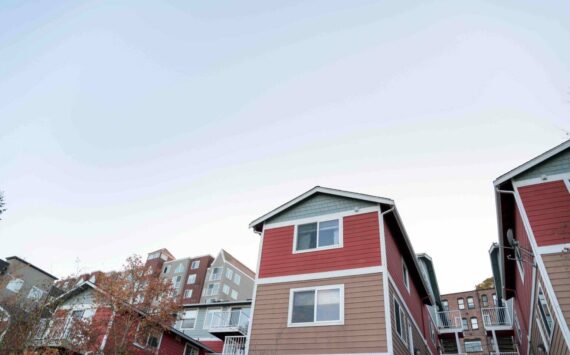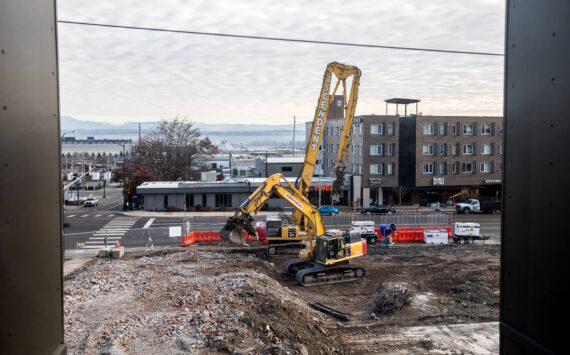Washington state just might join Hawaii and Arizona
By Morf Morford
Tacoma Daily Index
It’s not as traumatic as jet lag, but it is basically the same thing – and it affects all of us. I don’t know about you, but that one hour change twice a year completely messes up my schedule. From sleep patterns to my energy level throughout a typical day, every aspect of my life seems scrambled and out of synch for a week or so, twice a year.
One has to wonder why we do it. The real reason we do it is because everyone else does it. But that’s not an answer, that’s just an excuse.
I think we all know that, if there ever was a reason, there isn’t one now.
Contrary to popular assumptions, it was not American farmers who lobbied for daylight saving to have more time to work in the fields; in fact, the agriculture industry was deeply opposed to the time switch when it was first implemented on March 31, 1918, as a wartime energy conservation measure.
As anyone who has ever worked on a farm would know, it is the sun, not the clock, that dictates a farmers’ schedule, so daylight saving, especially a hundred years ago, was very disruptive.
After the national repeal in 1919, some states and cities, including New York City and Chicago, continued to shift their clocks each year.
National daylight saving time (DST) returned during World War II, but after its repeal (three weeks after the war ended) the confusing hodgepodge resumed.
States and localities could start and end daylight saving whenever they pleased, a system that Time magazine (no pun intended) described in 1963 as “a chaos of clocks.”
In 1965 there were 23 different sets of start and end dates in Iowa alone. For a time St. Paul, Minnesota, began daylight saving two weeks before its twin city, Minneapolis.
Back in the mid 1960s, passengers on a 35-mile bus ride from Steubenville, Ohio, to Moundsville, West Virginia, passed through seven time changes.
Order finally came in 1966 with the enactment of the federal Uniform Time Act, which standardized daylight saving time from the last Sunday in April to the last Sunday in October, although states had the option of remaining on standard time year-round.


Hawaii and Arizona (except for the state’s Navajo Nation) do not observe daylight saving time, and the U.S. territories of American Samoa, Guam, Puerto Rico, the Virgin Islands and the Northern Mariana Islands also remain on standard time year-round. Some Amish communities, on principle, do not change their clocks or work schedules.
Idaho has two time zones. And if Washington changed to permanent standard time, Coeur d’Alene, Idaho and Spokane, Washington, just a few miles apart, could end up on different time schedules if states went their own way instead of waiting for a national solution. (1*)
Around the world, only about one-quarter of the world’s population, in approximately 70 countries, observe our semi-annual clock-changing ritual (2*) – some for practical reasons – countries closer to the equator have little need to change their clocks since their hours of daylight don’t vary much from season to season.
China, by government dictate, is all one time zone.
We generally give Benjamin Franklin credit for inventing almost everything in America, but he didn’t “invent’ daylight saving time. As the name implies, the whole idea was to “save” daylight as in make good use of that early morning sunlight and essentially follow the sun in terms of getting up at – or near – daylight and finishing one’s (primarily outdoor) work before dark.
The premise of daylight saving time was to adjust work schedules, not only to “save” (or make the best use of) daylight but to save money.
This may have been an issue, and it may have even been true a hundred years ago, or in times of war or economic constriction, but now with air conditioning and other energy-consuming technologies in every home and business, the amount of daylight during a typical day has little to do with the energy used to heat, cool, cook or travel.
As I mentioned at the beginning, DST is much like jet lag. It is not as extreme, but it is widespread: everybody is in a state of recovery and, aware of it or not, each one of us is in a disjointed, (and at least once a year, a communal sleep-deprived state).
A Swedish study, for example, found that the risk of having a heart attack increases in the first 3 weekdays after switching to DST in the spring.
Fatigue induced by the clock change is thought to be the main cause for the increase in traffic accidents on the Monday following the start of DST.
On Mondays after the start of DST there were more workplace injuries, and the injuries were of greater severity compared with other Mondays.
When it comes to mental health, losing an hour of afternoon daylight after setting the clocks back to standard time can trigger mental illness, including bipolar disorder, and seasonal affective disorder (SAD), also known as winter depression.
A Danish study found an 11% increase in depression cases after the time seasonal change. The cases dissipated gradually after 10 weeks.
An Australian study found that male suicide rates increased the days after the spring and fall DST shift.
Being tired can decrease productivity, concentration, and general well-being.
A few simple travel tips related to adjusting to jet lag might be helpful here by giving us all ways of making it easier to handle the clock change:
Set your alarm to wake up a little earlier than usual on the Friday and Saturday before the DST switch. This makes it easier to get out of bed on Monday morning.
Eat a healthy breakfast first thing. Food tells your body it is the start of the day.
Get outside and go for a walk. Light, especially sunlight, helps to adjust your body clock.
If you have kids, help your children adjust by putting them to bed a little bit earlier the week before the time change.
A rule of thumb about jet lag is to allow a full day for each hour of time change. In other words, a day or two should be enough to adjust – at least for about six more months until we get to do it all over again.
And, when it comes to changing those clocks that need to be changed (your computer, phone and most devices will change automatically) remember to “spring forward” and “fall back.”
Oregon, Washington and California have all toyed with the idea of keeping on “standard time” and dropping our twice a year ritual for good.
To see more about local and regional possibilities when it comes to time, take a look here https://www.seattletimes.com/seattle-news/washington-considers-staying-on-pacific-daylight-time-forever/ or here http://www.nwnewsnetwork.org/post/washington-oregon-lawmakers-propose-abolish-daylight-saving-time.
This weekend we spring forward and change our clocks 1 hour ahead at 2 a.m. on Sunday, March 10th.
(1*) Several states are considering dropping DST including Alabama, Alaska, Arizona, Florida, Mississippi, New Mexico, Oregon, South Dakota, Texas, Utah, and Washington.
(2*) To see which countries use DST, check out this chart – https://www.timeanddate.com/time/dst/statistics.html







